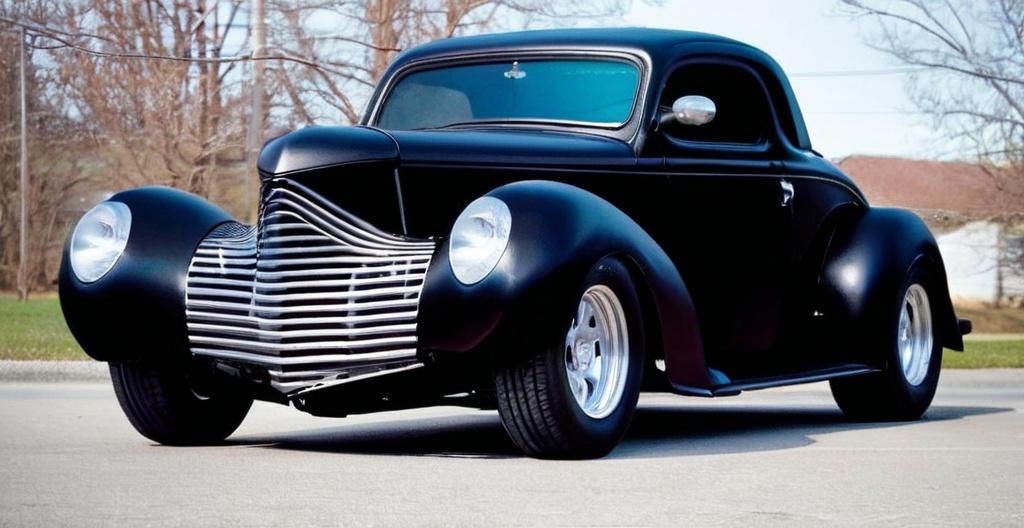Key Take Aways About Painting and Finishing a Street Rod
- Painting a street rod is crucial for its appeal and value.
- Choose paint colors considering era, style, and lighting.
- Thorough preparation, including rust removal and dent fixing, is essential.
- Masking protects parts not being painted.
- Primer ensures paint adheres smoothly.
- Opt for a base-coat clear-coat system for durability and gloss.
- Finishing involves sanding, buffing, polishing, and waxing.
- Common mistakes: inadequate drying time and using low-quality materials.
- Patience and high-quality materials are vital for a professional finish.

Understanding the Basics of Painting and Finishing a Street Rod
When it comes to bringing a street rod to life, the paint and finish aren’t just cosmetic; they play a huge role in the car’s overall appeal and value. Sure, you might have that souped-up engine and those flashy rims, but without the right look, your street rod’s just another fish in the sea.
Starting with the basics, it’s important to realize that painting a street rod isn’t just about slapping on a coat of paint. It’s a multistep process that requires patience, precision, and a keen eye for detail. We should first consider color choice. It’s more than just picking a favorite hue; you need to think about factors like the car’s era, style, and how that paint will look under different lighting conditions. Glossy or matte, metallic or plain—these choices can make or break your ride’s aesthetic.
The Preparation Phase
Before diving into the painting, it’s all about prep work. Imagine trying to build a house on a shaky foundation; it won’t stand the test of time. Similarly, prepping your car’s surface is vital. This involves rust removal, dent fixing, and ensuring that the body is as smooth as a baby’s bottom. Skipping this step could lead to a bumpy and uneven final look.
Masking is another important part. Anything you don’t want painted needs to be covered. A bit of a slip-up here, and your car’s delicate trim could end up looking like it’s been through a paintball fight.
Priming and Painting
Once the body is prepped, it’s time for primer. The primer is like that base coat for your nails. It smooths out imperfections and creates a uniform surface for the paint to adhere to. It’s a necessary step to prevent color discrepancies and ensure that the paint job lasts longer.
After priming, painting begins. Many folks opt for a base-coat clear-coat system, which involves painting a colored base followed by a clear topcoat. This combo ensures a glossy finish and provides protection against the elements. Patience here is key—a rushed paint job often ends in regret. Several thin coats are better than one thick glob, which can lead to runs and drips.
The Art of Finishing
The finishing touches are where the magic happens. After painting, sanding and buffing are typically required. This process involves smoothing out any imperfections and bringing out that glossy shine like the cherry on top of an ice cream sundae. It’s fiddly work, but it’s what separates good from great.
Polishes and waxes come next to seal the deal. These protective layers shield the paint, add extra shine, and make future washing a breeze.
Common Mistakes to Avoid
Even the most seasoned street rodding enthusiasts can slip up. One common mistake is not allowing enough time for drying between coats. Picture trying to put socks on wet feet. Not a good look. This impatience can ruin the finish and lead to extra work.
Another error is using low-quality materials. Investing in high-quality paint, primer, and equipment is vital. You wouldn’t use cheap ink for a masterpiece painting, would you? The same goes for your street rod.
Personal Experience: A Lesson Learned
I once got a bit too eager with my own street rod project. In my rush, I skipped a drying cycle. The result? A texture that looked more like an orange peel than a smooth finish. Lesson learned the hard way, my friends: patience really is a virtue.
Final Thoughts on Painting and Finishing a Street Rod
In the end, painting and finishing a street rod is as much about skill as it is about art. From choosing the right colors to ensuring that every inch of the body is pristine, it takes dedication and a good chunk of time. But the payoff? A street rod that doesn’t just drive—it turns heads and tells a story. If you’re willing to put in the work, that gleaming finish will be worth every minute.
